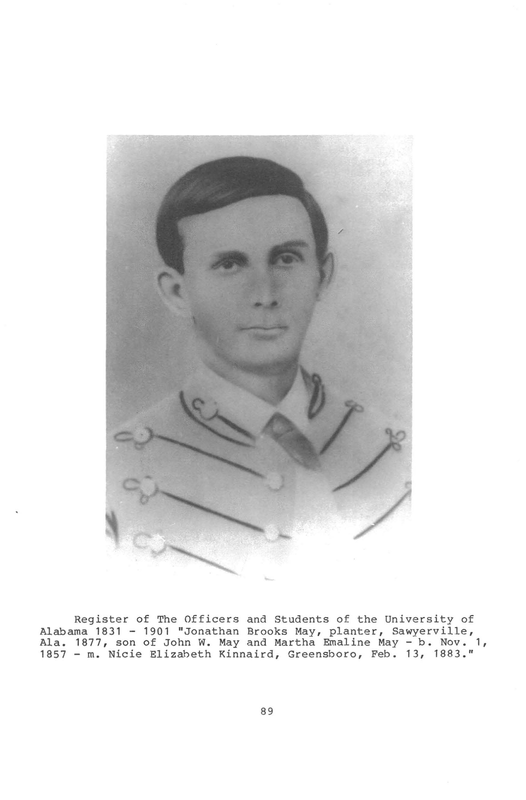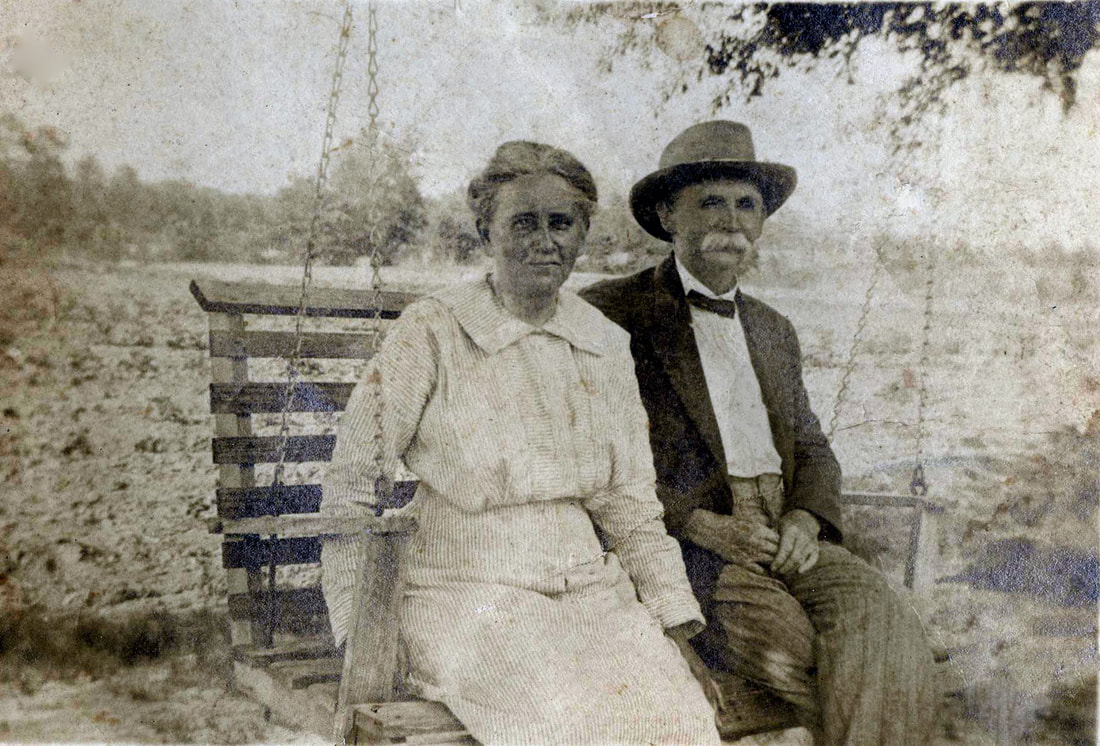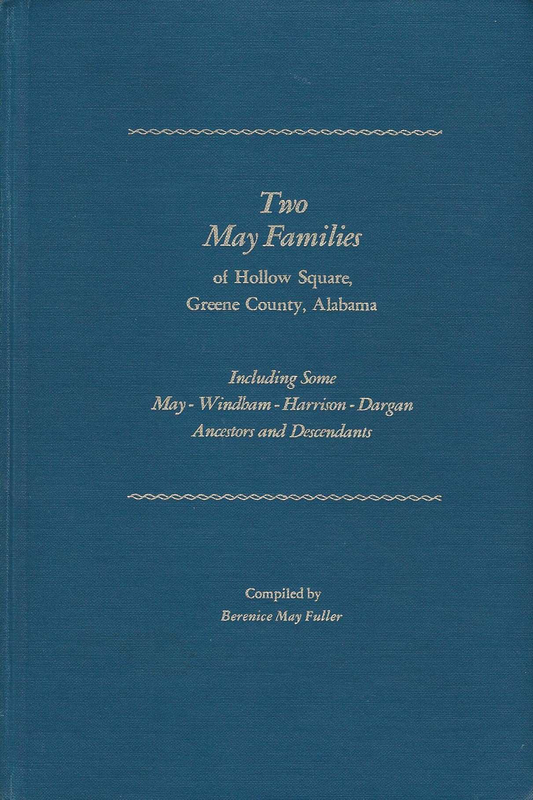I still find it amazing that my great-grandfather, John William May, was among the first wave of settlers of Alabama, moving to that new state in 1819 from South Carolina as a 4-year-old boy accompanying his parents, James F. and Charlotte Willingham May. The family set up a homestead in Hollow Square, Alabama, but not in the small community that lay west of present-day Sawyerville where the only remains of the settlement is Hollow Square Cemetery. They lived on what became known as the Jud May Place, about 3 miles to the north of present-day Sawyerville and east of the Crackerneck community.
John and Martha had 7 children who survived infancy: Thaddeus Theodore, Melissa Ann, Albert Judson, Francis Taylor, Mary Statira, William Harrison, James Benjamin, and Jonathan Brooks.
Dying as infants were Martha Melinda, John Thomas, and Harriet Elizabeth. Life was hard on the young in those days, and on their mothers as well.
Thaddeus Theodore (1841-1916), Albert Judson (1845-1926), the son from whom the Jud May Place got its name, and Francis Taylor (1846-1931) all fought for the Confederacy during the Civil War and are buried at Hollow Square Cemetery. William Harrison May (1852-ca.1910), about whom not much is known, is thought to be buried in an unmarked grave in the Callahan cemetery next to his parents, John and Martha. James Benjamin (1851-1933) is buried with members of his family in Arkansas.
| Bryan. How did that name creep into the family? Jonathan Brooks was enamored with orator and politician William Jennings Bryan and used his last name as the middle name of my father. (He already had a son with Brooks as middle name, so that name was not lost. A family truism is that if you call out Brooks at a family gathering half the crowd will stand up, women as well as men, for the name can swing both ways.) [Bryan, my father, in front of his store in Sawyerville, 1930s.] |
Brooks died in Baltimore at Johns Hopkins after a long illness. His body was returned home and interred at Hollow Square Cemetery where his brothers lay, but later Uncle Ellery had his father dug up and moved to Greensboro to lie beside his wife, who had died at the home of Uncle Ellery on Tuscaloosa Street in Greensboro on Christmas Morning 1925.
Here endeth this history lesson. You will note that I have seriously neglected the women in this history. That is not because they lack importance or that their descendants lack history, because there is a lot. To make this brief account manageable I had to limit myself, and my basic theme is how little old me fits into this line.
But thank goodness we have “Two May Families of Hollow Square, Greene County, Alabama, Including Some May – Windham – Harrison – Dargan Ancestors and Descendants” compiled by my first cousin Berenice May Fuller. Because of her failing health Berenice had to proceed with publication in 1988 before she was 100% happy with the work. In spite of that, it is an impressive accomplishment and is filled with family information, including photographs, newspaper articles, and other documents. I have it as a PDF document and would be happy to share it with anyone who lacks a copy of the original. It is truly the May Family Bible.











 RSS Feed
RSS Feed